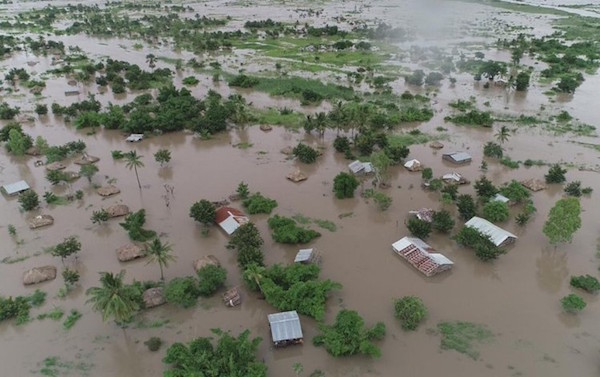How Can Information and Communications Tech Help in Disaster Preparedness and Response?
In the immediate aftermath of disasters, timely and effective information is critical for the decision-making process.
Intense tropical cyclones Idai and Kenneth caused catastrophic damage in Mozambique, Zimbabwe, and Malawi, leaving more than 1,200 people dead and thousands more missing in March 2019. The 2018 California wildfires also wreaked havoc and claimed more than 100 lives. Climate-related and geophysical disasters claimed 1.3 million lives and left 4.4 billion others injured, homeless, displaced or in need of emergency assistance between 1998 and 2017, according to Centre for Research on the Epidemiology of Disasters report.
 Intense tropical cyclones Idai and Kenneth caused catastrophic damage in Mozambique, Zimbabwe, and Malawi, leaving more than 1,200 people dead and thousands more missing in March 2019. Image Credit - Twitter(@WFP)Disasters such as droughts, cyclones, heatwaves, floods, earthquakes, tsunamis, volcanic eruptions hit different parts of the world on a regular basis. According to the International Telecommunication Union (ITU), a specialized agency of the United Nations for ICTs, "each year over the past decade there were, on average, 354 disasters, 68,000 deaths, 210 million people affected and USD 153 billion in damages."
Intense tropical cyclones Idai and Kenneth caused catastrophic damage in Mozambique, Zimbabwe, and Malawi, leaving more than 1,200 people dead and thousands more missing in March 2019. Image Credit - Twitter(@WFP)Disasters such as droughts, cyclones, heatwaves, floods, earthquakes, tsunamis, volcanic eruptions hit different parts of the world on a regular basis. According to the International Telecommunication Union (ITU), a specialized agency of the United Nations for ICTs, "each year over the past decade there were, on average, 354 disasters, 68,000 deaths, 210 million people affected and USD 153 billion in damages."
In the immediate aftermath of disasters, timely and effective information is critical for the decision-making process. Information and Communication Technologies (ICTs) play a significant role in mitigation, preparedness, response, and rehabilitation by facilitating the flow of vital information in a timely manner. To deliver and deploy telecommunications / information and communication resources (transportable, easy to deploy and reliable systems that are non-exclusive) in a timely manner in the event of disasters, the ITU has designed the ITU Framework for Cooperation in Emergencies (IFCE). Innovative technologies such as robotics, drone technology, GIS, and emerging technologies like artificial intelligence (AI), the Internet of Things (IoT), cloud computing and Big Data are transforming the complex process of disaster management...
- Tags:
- artificial intelligence (AI)
- Artificial Intelligence for Disaster Response (AIDR)
- big data
- California Wildfires
- Centre for Research on the Epidemiology of Disasters
- Cloud Computing
- disaster mitigation
- Disaster Preparedness
- disaster resilience
- disaster response
- disaster risk reduction
- drone technology
- Facebook Safety Check crisis response tool
- geographic information system (GIS)
- geophysical disasters
- Global Pulse initiative
- Harvard Humanitarian Initiative
- humanitarian crisis
- Humanitarian Open Source Softweare (HFOSS)
- humanitarian organizations
- Idai
- information and communication technologies (ICTs)
- International Telecommunication Union (ITU)
- Internet of Things (IoT)
- ITU Framework for Cooperation in Emergencies (IFCE)
- Kenneth
- Kobo Toolbox
- machine learning (ML)
- Malawi
- Management (UN-GGIM)
- mobile data collection
- Mozambique
- Nexus Environmental Assessment Tool (NEAT+)
- open source software (OSS)
- open-source tool
- Qatar Computing Research Institute (QIDR)
- Renu Mehta
- Robotics
- UN Refugee Agency (UNHCR)
- United Nations
- United Nations Committee of Experts on Global Geospatial Information
- United Nations International Children's Emergency Fund (UNICEF)
- unmanned aerial vehicles (UAVs)
- World Food Program (WFP)
- Zimbabwe
- Login to post comments